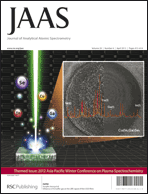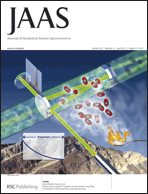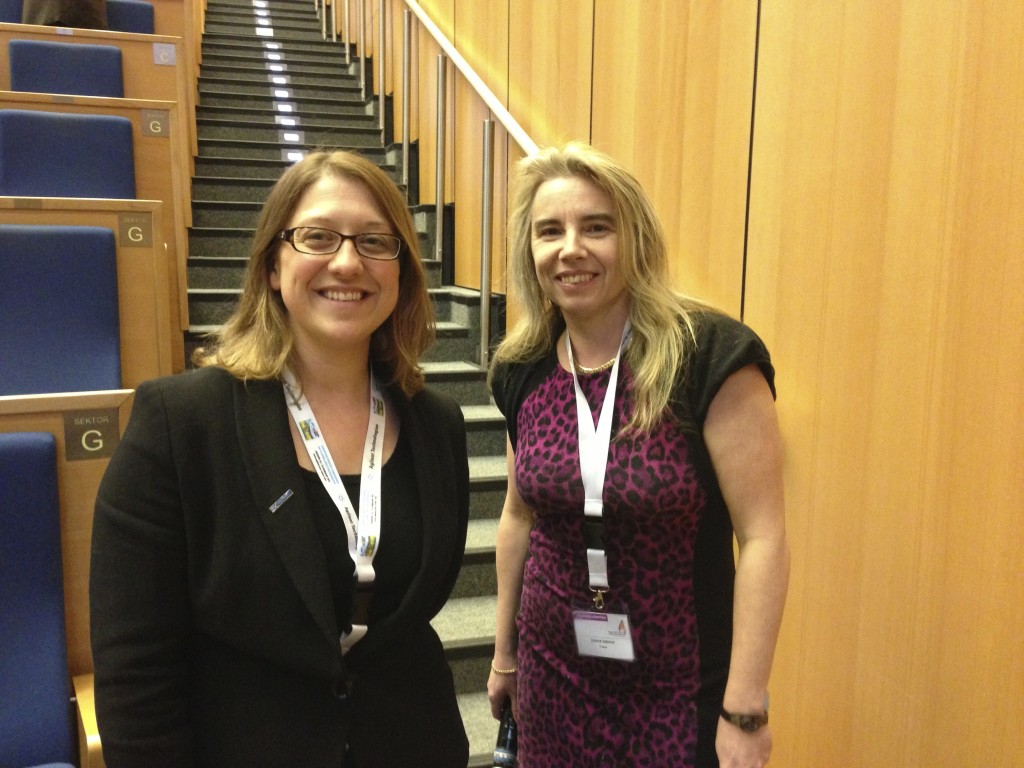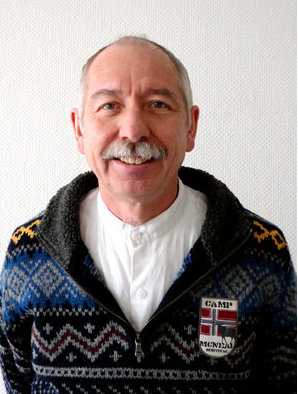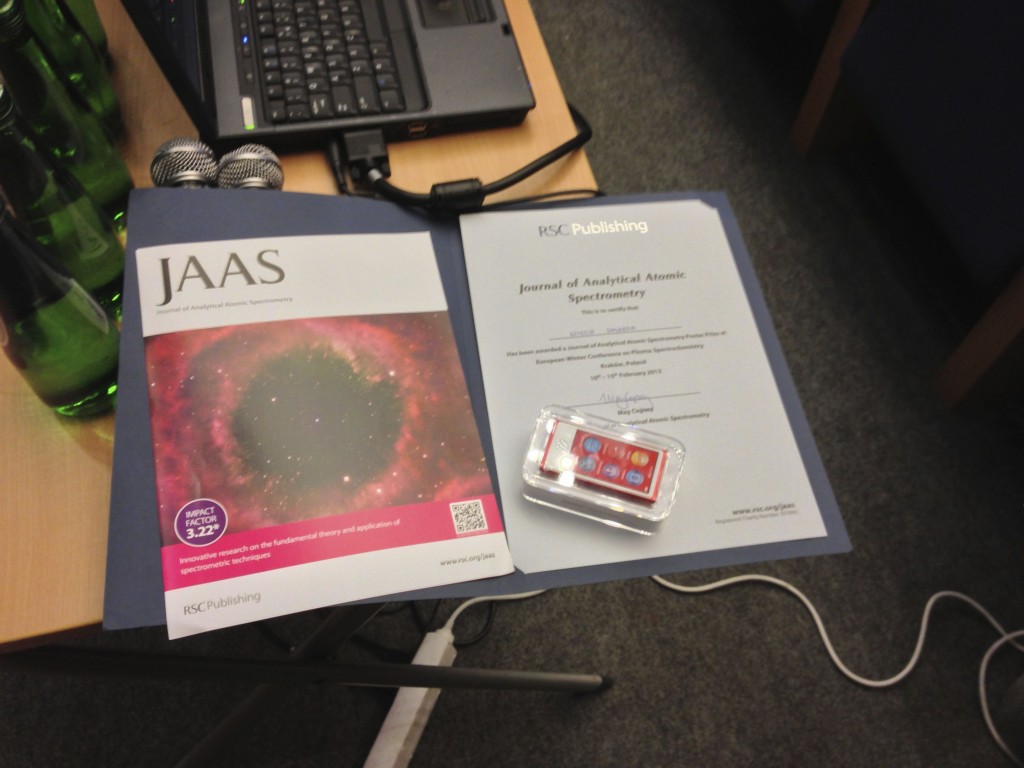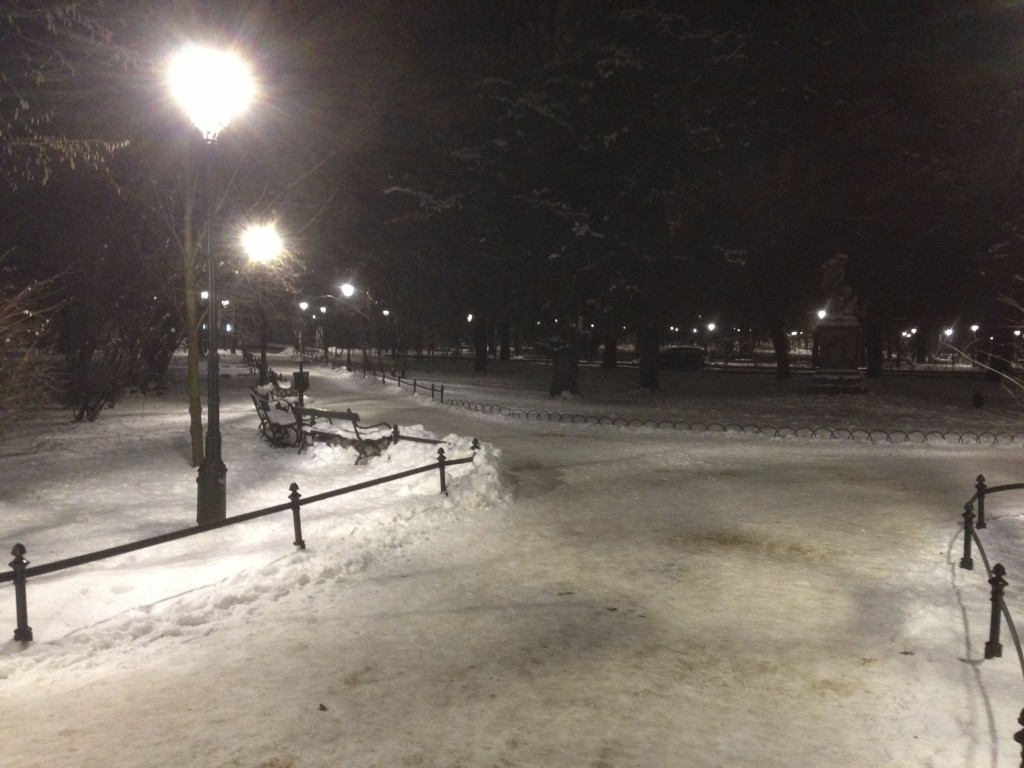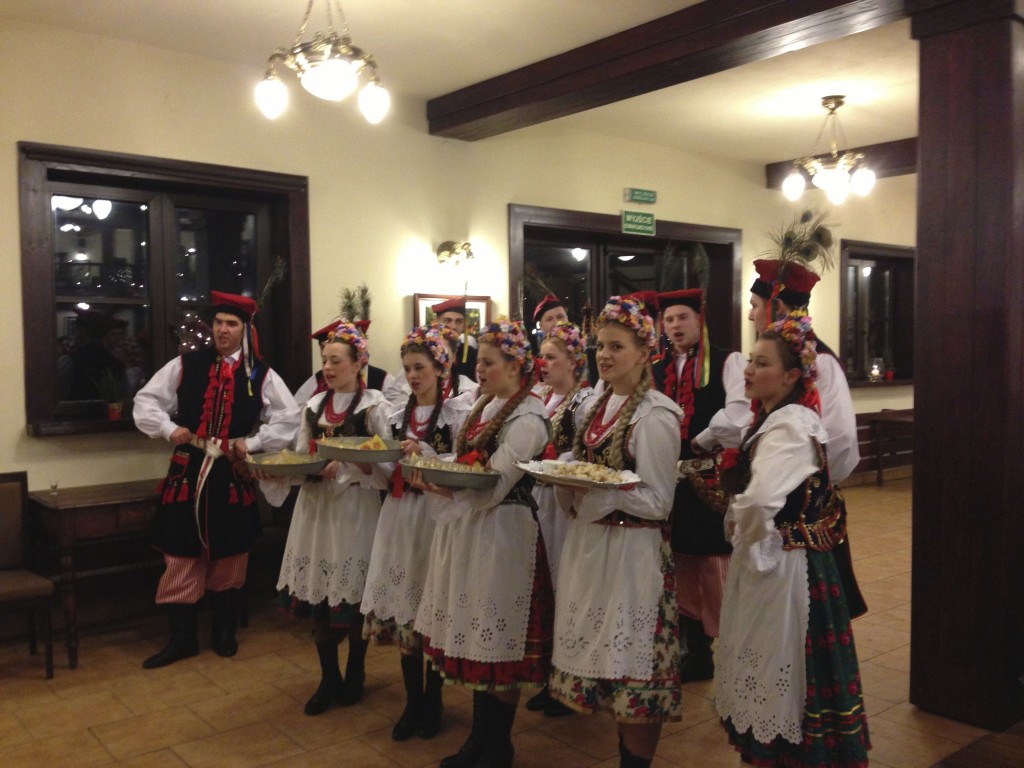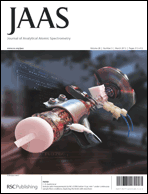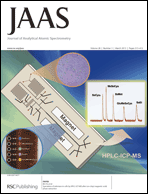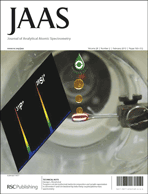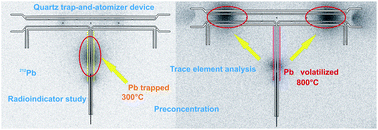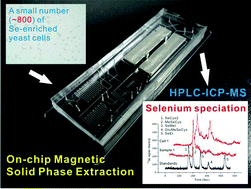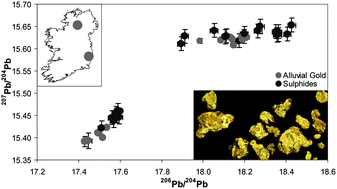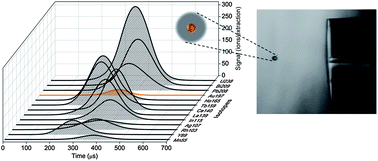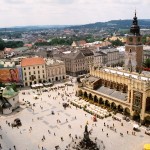The fourth issue of JAAS is now available online! Take a look at our two new covers and read all about the innovative research behind them. The outside front cover showcases the work of Sungho Jeong and his group from the Gwangju Institute of Technology in Korea. The researchers report the enhanced performance of LIBS measurement by using an air and argon (Ar) jet for the analysis of Cu(In,Ga)Se2 (CIGS) thin films.
Influence of Ar buffer gas on the LIBS signal of thin CIGS films
Chan-Kyu Kim , Jung-Hwan In , Seok-Hee Lee and Sungho Jeong
J. Anal. At. Spectrom., 2013,28, 460-467
DOI: 10.1039/C2JA30297G
Our colourful inside front cover gives a snapshot of a study from the University of Copenhagen, Denmark. David Balslev-Clausen and colleagues propose a high performance alternative to routine laboratory mass spectrometry for isotopic geochemical analyses. In this work, they use a flash combustion Cavity Ring Down Spectrometer system to investigate 13C/12C of organic carbon in geological material, suggesting that laser based isotope techniques can be efficiently used in geochemistry.
Precise and accurate δ13C analysis of rock samples using Flash Combustion–Cavity Ring Down Laser Spectroscopy
David Balslev-Clausen , Tais W. Dahl , Nabil Saad and Minik T. Rosing
J. Anal. At. Spectrom., 2013, 28, 516-523
DOI: 10.1039/C2JA30240C
In addition, this new issue features work presented at the 2012 Asia Pacific Winter Conference on Plasma Spectrochemistry, held in Jeju Island, South Korea:
The selected papers listed below show the latest developments in spectrochemical analysis including inductively coupled plasma (ICP) and laser-assisted analytical techniques. To know more, please click on the links below. These papers will be free to read until April 4th.
Determination of prostate-specific antigen (PSA) tagged with TiO2 nanoparticles using ICP-MS
H. K. Cho and H. B. Lim
J. Anal. At. Spectrom., 2013, 28, 468-472
DOI: 10.1039/C3JA30299G
Reproducibility of CIGS thin film analysis by laser-induced breakdown spectroscopy
Jung-Hwan In , Chan-Kyu Kim , Seok-Hee Lee and Sungho Jeong
J. Anal. At. Spectrom., 2013, 28, 473-481
DOI: 10.1039/C3JA30298A
Precise determination of the lithium isotope ratio in geological samples using MC-ICP-MS with cool plasma
Min Seok Choi , Jong-Sik Ryu , Ha Yan Park , Kwang-Sik Lee , Youngwoo Kil and Hyung Seon Shin
J. Anal. At. Spectrom., 2013, 28, 505-509
DOI: 10.1039/C2JA30293D
UV-induced atomization of gaseous mercury hydrides for atomic fluorescence spectrometric detection of inorganic and organic mercury after high performance liquid chromatographic separation
Ke Huang , Kailai Xu , Xiandeng Hou , Yun Jia , Chengbin Zheng and Lu Yang
J. Anal. At. Spectrom., 2013, 28, 510-515
DOI: 10.1039/C3JA30363B


